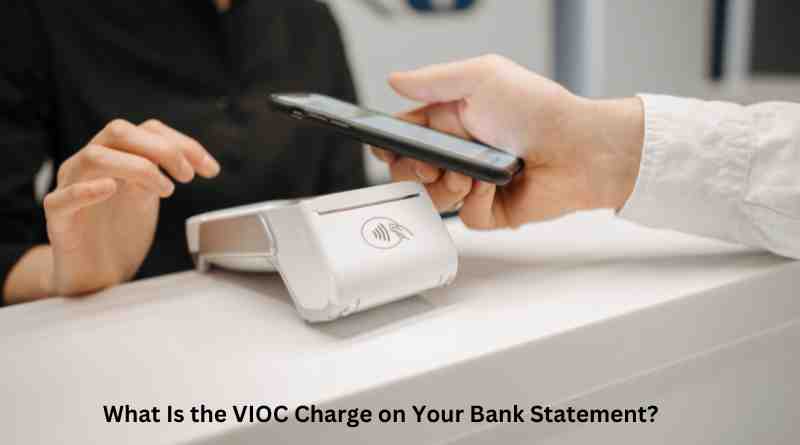What Is the VIOC Charge on Your Bank Statement?
Understanding the VIOC Charge
If you’ve ever scrutinized your bank statement only to find a mysterious charge labeled “VIOC,” you’re not alone. Many people encounter this perplexing abbreviation without a clear understanding of what it represents. The acronym “VIOC” stands for “Vehicle Inspection Oil Change,” which is a service provided by a company called Valvoline Instant Oil Change. This charge typically appears on your bank statement when you’ve visited one of their service centers for an oil change or vehicle inspection.
Valvoline Instant Oil Change: A Brief Overview
Valvoline Instant Oil Change, often referred to simply as VIOC, is a prominent automotive maintenance company that specializes in quick oil changes and vehicle inspections. With numerous locations across the United States, VIOC aims to provide convenient and efficient service for customers in need of routine car maintenance. Their service centers are equipped to handle various types of vehicles, offering oil changes, fluid top-ups, filter replacements, and comprehensive vehicle inspections.
The Importance of Regular Vehicle Maintenance
Maintaining your vehicle is crucial for ensuring its longevity and performance. Regular oil changes, in particular, play a significant role in preserving your engine’s health and preventing costly repairs down the road. Engine oil lubricates the moving parts of your engine, reducing friction and heat buildup. Over time, however, oil breaks down and becomes less effective, potentially leading to engine damage if not replaced promptly. By adhering to a routine maintenance schedule that includes oil changes and inspections, you can extend the life of your vehicle and avoid unexpected breakdowns.
Understanding the VIOC Charge on Your Bank Statement
When you visit a Valvoline Instant Oil Change location for service, you’ll receive a receipt detailing the cost of the services rendered. The total amount charged will appear on your bank statement, typically abbreviated as “VIOC.” This charge encompasses the cost of the oil change, any additional services performed, and applicable taxes or fees. While the abbreviation may initially seem cryptic, knowing its meaning allows you to easily identify transactions related to your vehicle maintenance.
Reasons for VIOC Charges Vary
The specific amount charged for VIOC services can vary depending on several factors, including the type of vehicle you own, the type of oil used, and any additional services requested. Different vehicles require different quantities and grades of oil, which can impact the overall cost of the service. Additionally, if you opt for additional services such as fluid top-ups or filter replacements, these will be reflected in the total amount charged. It’s essential to review your receipt carefully to understand the breakdown of charges and ensure accuracy.
Tips for Managing VIOC Charges
To effectively manage VIOC charges on your bank statement, consider implementing the following tips:
- Keep Track of Maintenance Records: Maintain a record of your vehicle’s maintenance history, including dates of service, types of services performed, and associated costs. This information can help you identify VIOC charges on your bank statement and track your vehicle’s maintenance schedule.
- Budget for Routine Maintenance: Incorporate the cost of routine maintenance, including oil changes, into your budget to avoid unexpected financial strain when these charges appear on your bank statement.
- Ask for Estimates: Before authorizing any services at Valvoline Instant Oil Change, request an estimate of the total cost to ensure transparency and avoid surprises when you receive your bank statement.
- Review Statements Regularly: Take the time to review your bank statements regularly to identify any unfamiliar charges, including VIOC charges, and address any discrepancies promptly.
Conclusion
In conclusion, the VIOC charge on your bank statement corresponds to services provided by Valvoline Instant Oil Change, a company specializing in quick oil changes and vehicle inspections. Understanding the nature of this charge and the services it encompasses is essential for effectively managing your vehicle maintenance expenses. By staying informed and implementing proactive measures, you can maintain your vehicle’s health and financial well-being simultaneously.
Frequently Asked Questions about VIOC Charges on Bank Statements
- What does “VIOC” stand for on my bank statement?
“VIOC” stands for “Vehicle Inspection Oil Change,” which is a service provided by Valvoline Instant Oil Change, a company specializing in automotive maintenance.
- Why do I see VIOC charges on my bank statement?
If you’ve visited a Valvoline Instant Oil Change location for an oil change or vehicle inspection, the corresponding charges will appear on your bank statement as “VIOC.”
- How can I identify VIOC charges on my bank statement?
VIOC charges typically appear as abbreviated transactions on your bank statement. Look for any charges labeled “VIOC” or “Valvoline Instant Oil Change” to identify transactions related to automotive maintenance.
- What services are included in VIOC charges?
VIOC charges encompass the cost of services provided by Valvoline Instant Oil Change, such as oil changes, fluid top-ups, filter replacements, and comprehensive vehicle inspections.
- Can VIOC charges vary in amount?
Yes, the specific amount charged for VIOC services can vary depending on factors such as the type of vehicle, type of oil used, and any additional services requested during the visit to Valvoline Instant Oil Change. It’s essential to review your receipt for a breakdown of charges to understand the total amount charged.
Read also: check

Post Comment